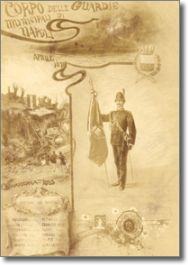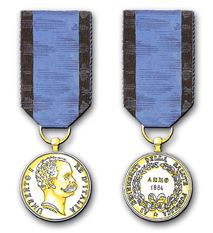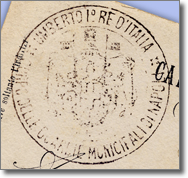
On 2nd September, when the City Council decided to set up the unit, the official name chosen was Municipal Guards Corps of the City of Naples.
Their job involved guard and civil police duties but they would also come to the rescue in the event of serious natural disasters outside the city confines.
There is a rare, antique postcard which demonstrates this. The card is a simple rectangle, yellowed with age, which talks with unmitigated pride of the huge commitment and even the ultimate sacrifice made by the Municipal Guards of Naples.
The postcard shows us the Corps' gala uniform and flag and three pictures which show the civil police working after tragic events which occurred during the last quarter of the XIX century.

